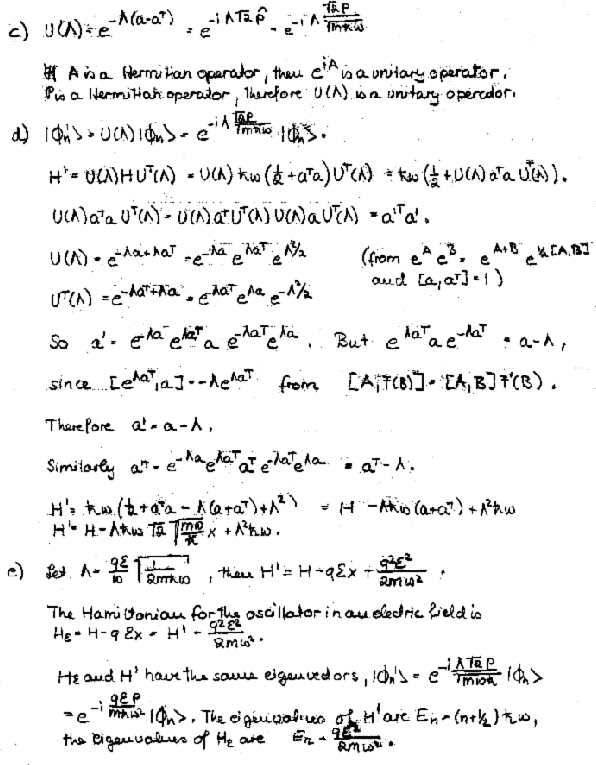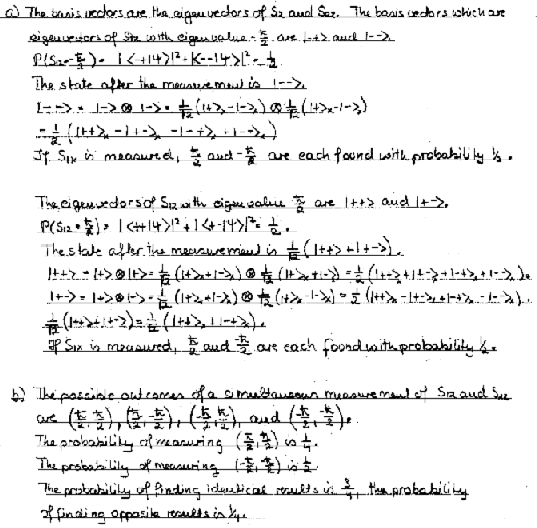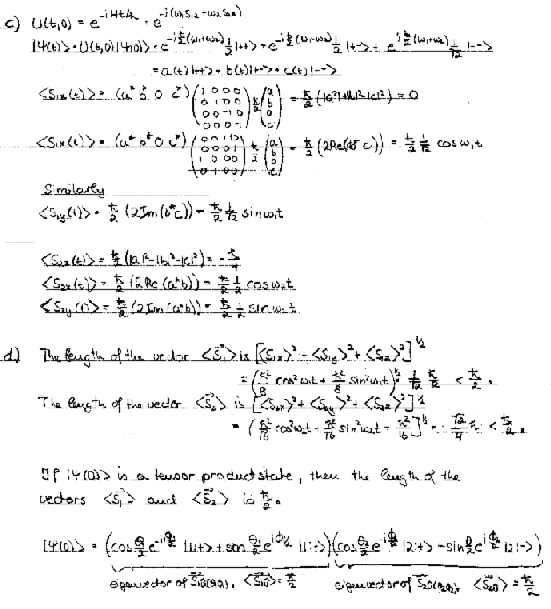Problem 1, solution


Problem 2, solution
|11>=|++>,
|10>=½1/2(|+->+|-+>),
|1-1>=|-->,
|00>=½1/2(|+->-|-+>).
From symmetry we therefore have that the common eigenfunctions of S2 and Sx are
|11>x=|++>x,
|10>x=½1/2(|+->x+|-+>x),
|1-1>x=|-->x,
|00>x=½1/2(|+->x+--+>x).
We have
|++>x=½1/2(|+>+|->)Ľ1/2(|+>+|->)=½(|++>+|+->+|-+>+|-->).
|-->x=½1/2(|+>-|->)Ľ1/2(|+>-|->)=½(|++>-|+->-|-+>+|-->).
|+->x=½1/2(|+>+|->)Ľ1/2(|+>-|->)=½(|++>-|+->+|-+>-|-->).
|-+>x=½1/2(|+>-|->)Ľ1/2(|+>+|->)=½(|++>+|+->-|-+>-|-->).
Therefore
|11>x=½(|++>+|+->+|-+>+|-->),
|10>x=½1/2(|++>-|-->),
|1-1>x=½(|++>-|+->-|-+>+|-->),
|00>x=½1/2(|+->-|-+>).
Problem
3, solution
(a) The eigenvectors of Sy are |+>y=2-1/2(|+>+i|->) and |->y=2-1/2(|+>-i|->).
Therefore: |+>=2-1/2(|+>y+|->y) and |->=(-i/21/2)(|+>y-|->y).
|y1>=|+>y.
|y2>=(-i/61/2)(|+>y+|->y) -(i/31/2)(|+>y-|->y)=(-i)(0.986|+>y+0.169|->y
(b) <y1|y2>=-i/61/2-i(2/6)1/2=-i0.986 in the Sz basis.
<y1|y2>=-i0.986 in the Sy basis.
(c) |y1(t)>=2-1/2(exp(-iw0t/2)|+>+iexp(iw0t/2)|->)

=(h/4)i(-exp(-iw0t)+exp(iw0t))= -(h/2)sin(w0t).
If <Sx>=±(h/2), then |y1(t)> is an eigenvector of Sx. This happens when w0t=np/2, n=odd.
Problem
4, solution

